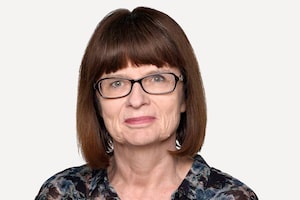Globe and Mail Public Editor Sylvia Stead.The Globe and Mail
In June, I asked readers what issues they felt should go under the media microscope. The Globe and Mail had been honoured for its work on military men and women suffering from post-traumatic stress and from its coverage of indigenous women, but there is always much more to do.
A couple of readers suggested solitary confinement and I passed those messages on to the senior editors.
"… The issue which came to mind immediately and has been haunting me for some time is the issue of solitary confinement and in particular its abuse against First Nations inmates," said Peter Elson, a University of Victoria professor. "Go for it. Please."
A woman from Ottawa said: "You asked for issues that should be examined. My suggestion is solitary confinement. This is a barbaric practice, which is not justice, but revenge. It accomplished nothing, except to destroy the person, and should never be permitted."
Globe editorial: The indifference that hurt Adam Capay starts at the top in Canada
Related: 640 days, four walls and one tiny window: Richard Wolfe's dispatches from solitary
Dr. Elson was pleased to see The Globe "go for it" and continue the recent coverage of news stories and editorials over the past weeks on solitary confinement.
They have focused on the segregation of Adam Capay, a young indigenous man who had been in isolation for 52 months at a Thunder Bay jail. The story of his solitary confinement in an acrylic-glass box under artificial light 24 hours a day has drawn outrage from many quarters.
More readers have e-mailed or tweeted.
"If your reporting about Adam Capay is correct, and I have no doubt that it is, it is absolutely shameful that any person, especially a First Nations person, is treated this 'third world country' way in our very special Canada! This an outrage in every way … he/we deserve better!" one reader said.
This from another: "Your coverage of Adam Capay is such a powerful example of the importance of the free press in maintaining a free and democratic society. Proud to be a paying subscriber."
Even before the Capay case, reporter Patrick White has been writing about the treatment of other prisoners, starting with Eddie Snowshoe, another young indigenous man, who was held in solitary for 162 days and who died by suicide.
Along with the articles, the editorials have been blistering and called on various levels of government to take action, calling Ontario's treatment of prisoners sickening. That editorial has been directly shared by tens of thousands of readers.
The Globe's editor-in-chief, David Walmsley, described the motivation behind the coverage.
"The state created the life conditions for Adam Capay, all the way to the custom-made Plexiglas cells with 24-hour lighting. The state, by any definition, has failed to meet its duty of care. When that happens, we apply scrutineering fact-based journalism. Those who are the architects need to be accountable and, with great credit to the reporters Patrick White and Joe Friesen, the overuse of solitary confinement has been exposed."
And he gave a shout-out back to the readers for coverage suggestions. "We appreciate very much the input of readers, and their encouragement for us to keep going."
Perhaps it will also provoke political leaders into action, which is an important role for journalism. This is a classic case of public service journalism, giving a voice to the voiceless and raising their issue to the readers, who then continue that cycle of journalism by raising it to the highest levels of government.
 Sylvia Stead
Sylvia Stead